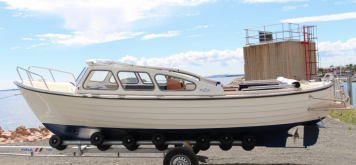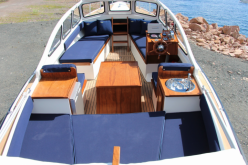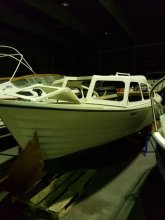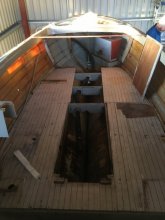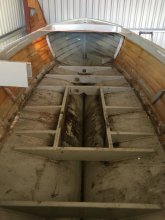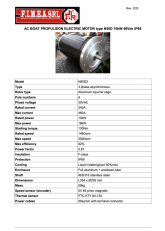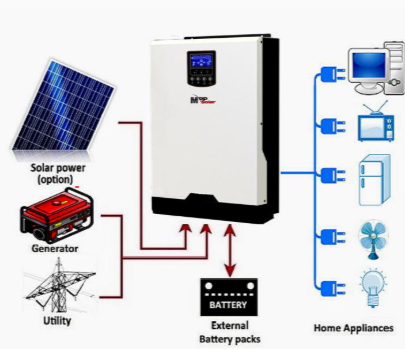Is everything looking a-ok so far? The next step I'll upload will be the Bilge pump, invter, BMS, shunt, battery monitor etc.
Fuse.
Fuse is normally made at least 25% higher rating than maximum continuous current, so it won't blow except in case of overload.
Wire gauge is normally selected to carry current equal to fuse rating without getting hotter than its insulation can take. Sometimes larger gauge to avoid excessive voltage drop due to resistance per foot/meter x length.
240A at rated power, 460A max.
We might want to size based on max current. Given only 280 Ah battery, 460A draw would last about half an hour, so wire doesn't have as much time to heat up. But fuse can certainly blow. You might get away with 460A fuse, but if motor will ever draw that much current, best to oversize 25%, use 575A fuse.
That is a rather large fuse, and large gauge wire. It could be more reasonable to divide into two 300A or three 200A circuits, each with its own fuse.
but if you use multiple wires for negative side, in the event one came lose the others would carry excessive current. Can battery be close enough to motor that a wide busbar could be used for negative?
Note that all busbars between celss also have to carry the 460A draw. Unless you can avoid every carrying more than 240A (OK to have a brief surge starting motor, but not sustained for seconds.)
Is 460A even reasonable for the cells? If you put in two strings of cells, two batteries, they could be fused individually.
Recommended 50 mm^2 is about 1/0. I would use 2/0 cable, which has ampacity 300A in free air for 90 degree C insulation. You can probably get 105 degree C insulation. 300A fuse would be reasonable if current is kept to 240A maximum.
Fuse must be rated not just to blow above 300A, but also for voltage (about 60V fully charged.) And another important rating AIC, Amps Interrupting. If you short-circuit the battery, current will be so high that it can just arc through the fuse and start a fire. Cells have Internal Resistance rating, probably 0.25 milli-ohms maximum, and 0.17 milli-ohms typical measurements. Do the math V/R = I and you'll find it can deliver about 20,000A. Fuse AIC rating needs to be that high. A class T fuse has is rated 20,000 AIC and 125V, sufficient for a single string of lithiu cells. (if two strings, each needs such a fuse.)
